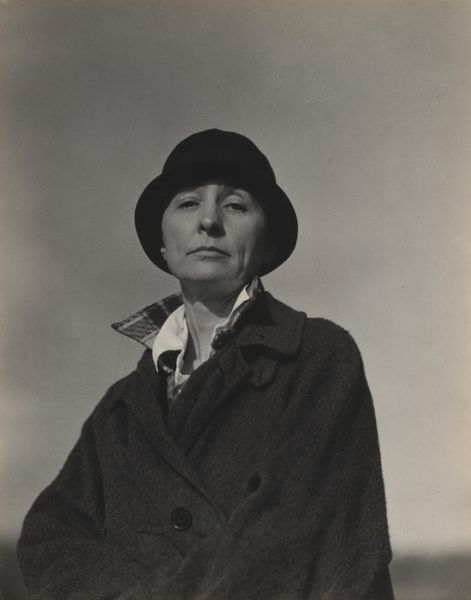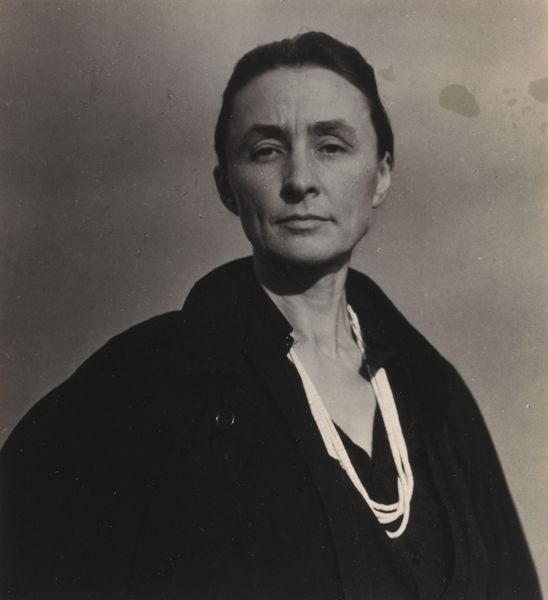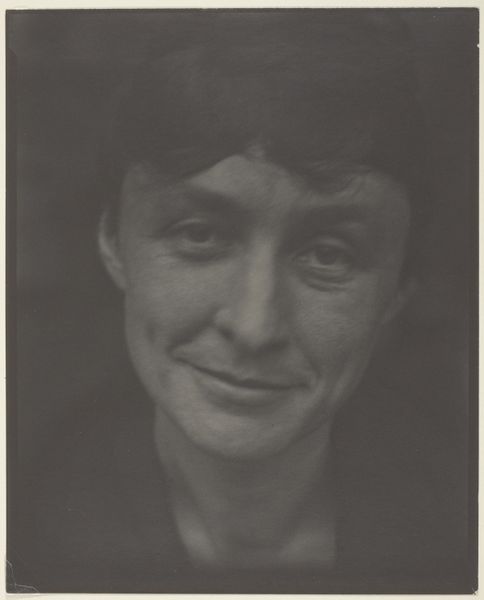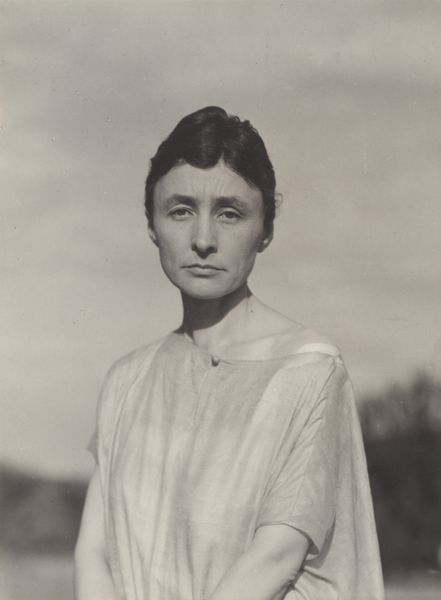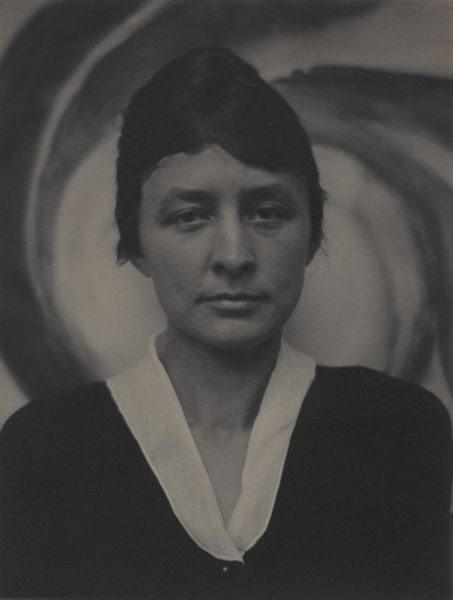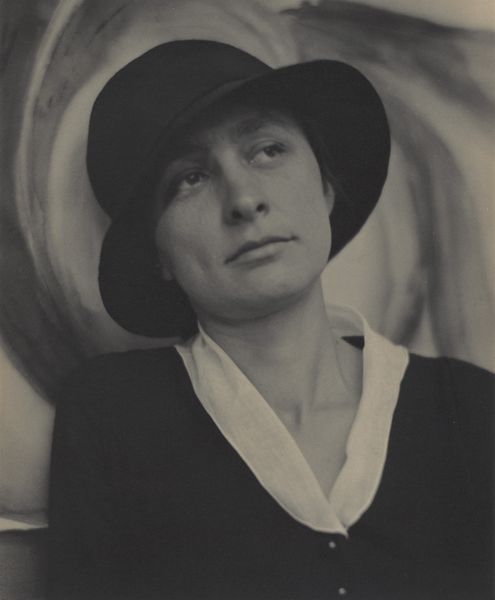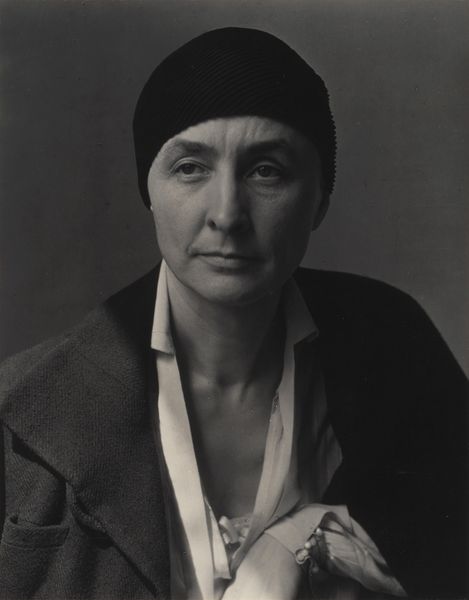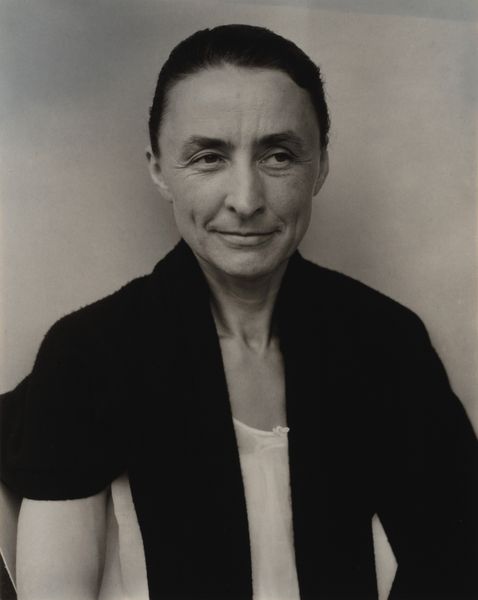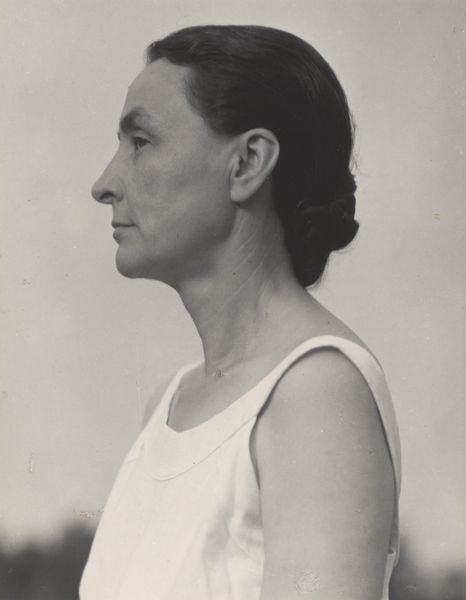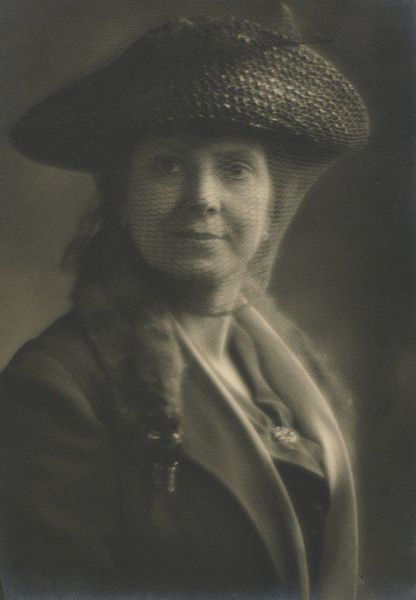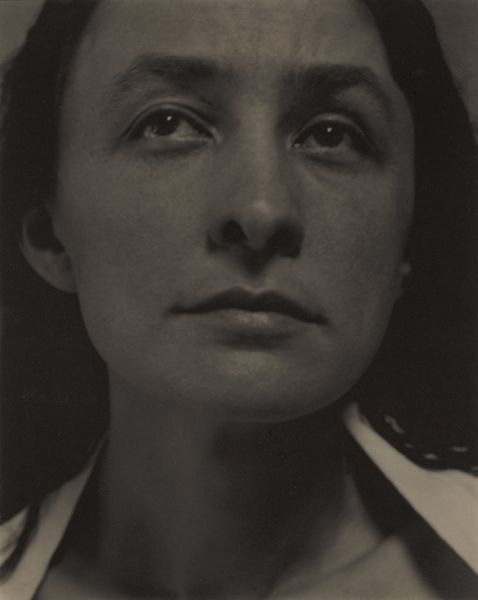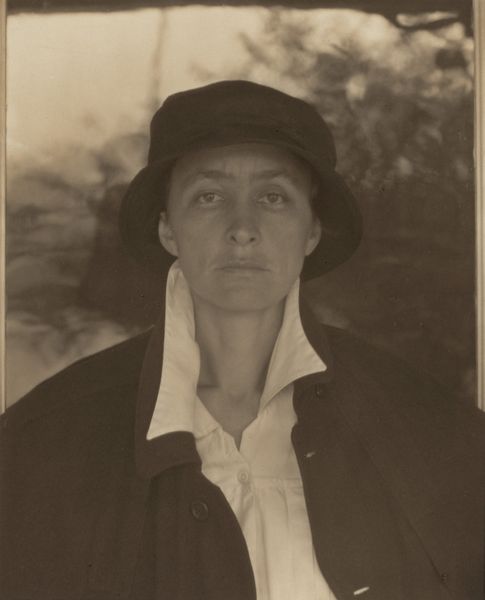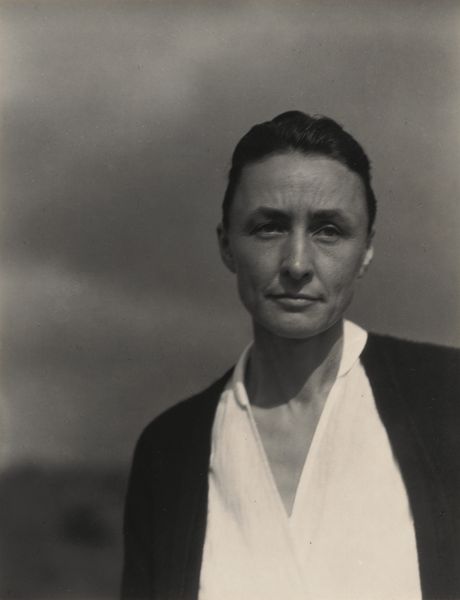
photography, gelatin-silver-print
#
portrait
#
self-portrait
#
portrait
#
photography
#
gelatin-silver-print
#
modernism
Dimensions: image: 24 x 19 cm (9 7/16 x 7 1/2 in.) sheet: 25.1 x 19.8 cm (9 7/8 x 7 13/16 in.) mat: 56.3 x 45.7 cm (22 3/16 x 18 in.)
Copyright: National Gallery of Art: CC0 1.0
Curator: This gelatin silver print is entitled “Georgia O’Keeffe,” created in 1922 by Alfred Stieglitz. Editor: Immediately, the severe simplicity strikes me. It's almost monastic, with that dark, enveloping hat framing her face like a halo or perhaps a shadow. Curator: Observe the tonal gradations achieved through the gelatin silver process. The artist’s mastery resides in rendering form and depth from such limited means. The hat's brim, a perfect circle, and the angle of her gaze create intersecting planes of shadow and light that guide our perception. Editor: Yes, and how potent that framing device is! The hat could be seen as a symbolic protector, obscuring aspects of her persona while simultaneously drawing our eye to her steady gaze. It gives an initial sense of withdrawal but also intense determination. Curator: Note how the composition transcends mere representation. It's an exploration of geometric relationships and the play of light and shadow. This is about structure, balance, and the formal reduction of visual information to its most essential components. The tonal palette serves a vital role here, harmonizing disparate formal relationships between her clothing and physiognomy. Editor: Thinking about the symbols at play, she presents herself cloaked but not hiding, mature yet somehow retaining a girlish smoothness in her cheeks and jawline. The averted glance seems intentional, conveying her intellectual depth rather than mere coquetry. She invites observation but with conditions. Curator: Indeed, the overall effect creates visual equilibrium—almost mathematical in its precision. It perfectly illustrates the aesthetics and technical preoccupations within modernist portraiture in its early stages of development. Editor: Considering it was made by Stieglitz, it becomes intensely layered: the male gaze capturing a female artist who refused to have her vision co-opted, even as she worked to redefine visual idioms around her. The work evokes a complicated dialogue about marriage and its effect on artists both creatively and personally. It gives you a feeling that you can never completely access its subject’s complex emotions. Curator: Seeing it in these terms, this image stands as an excellent exercise in observing pictorial planes, subtle tones, and pure artistic restraint. Editor: I find that assessment persuasive but perhaps a bit limited. I appreciate a fresh look into our understanding of visual culture and personal mythmaking.
Comments
No comments
Be the first to comment and join the conversation on the ultimate creative platform.

